
Boléro 2022/2023 SEASON February 2 – 5, 2023
Completely engaged. That’s how Joe Coyle feels about his life at Judson Manor.
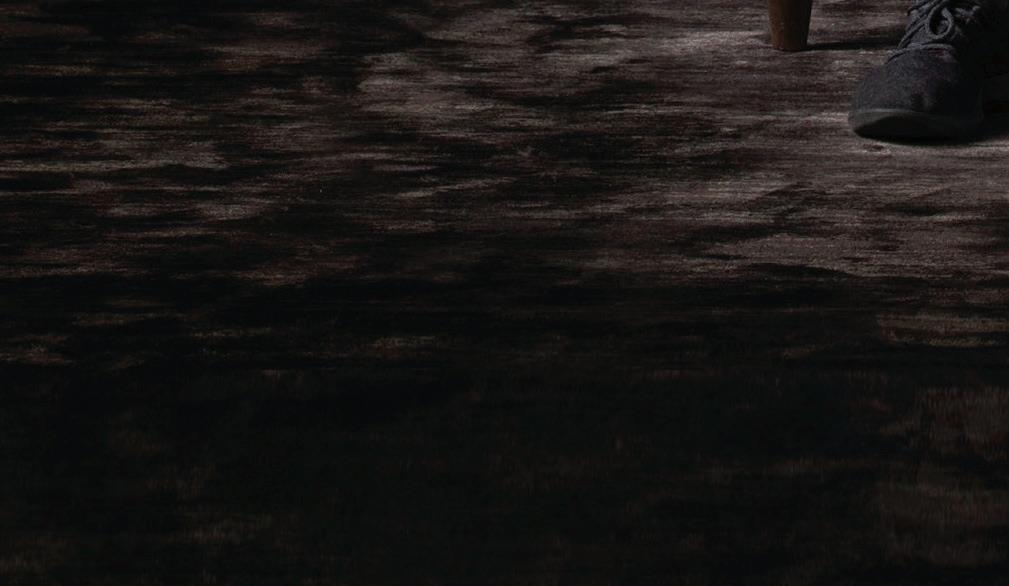

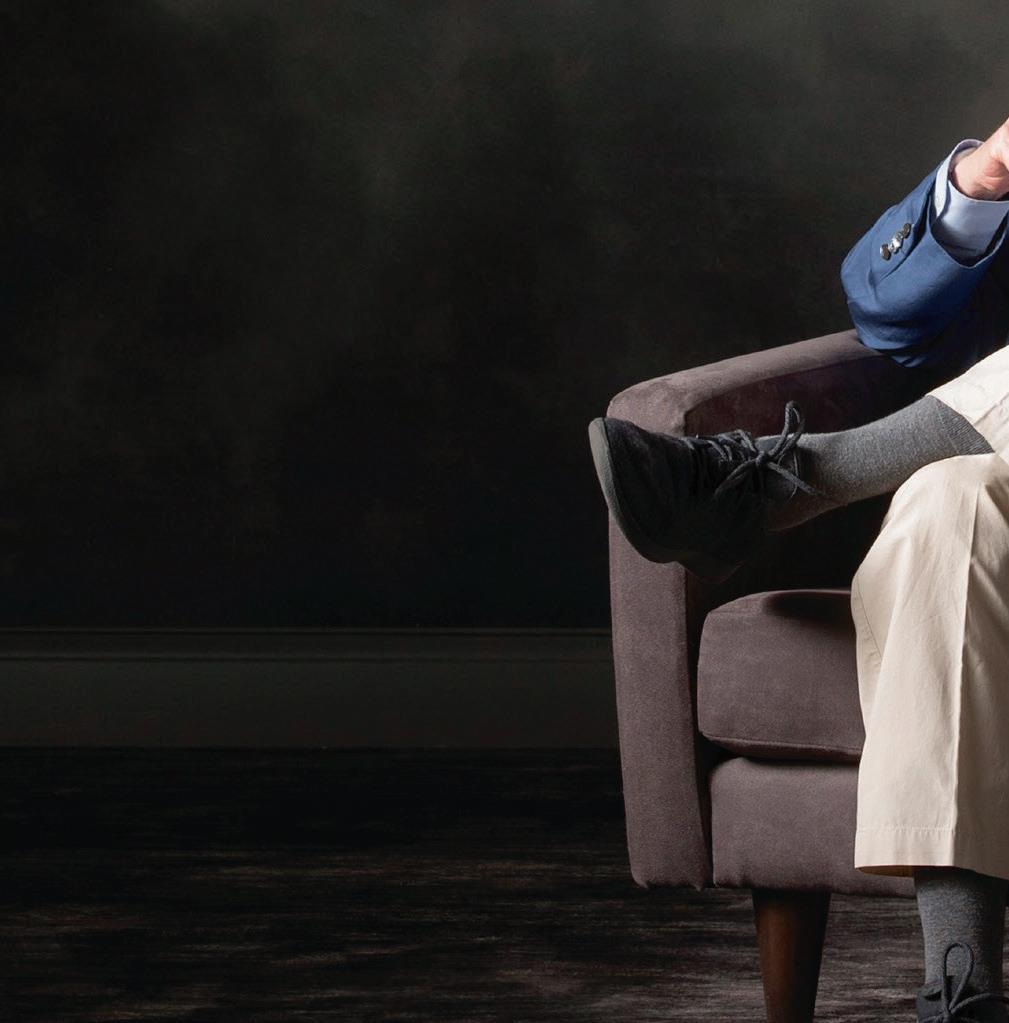

An award-winning journalist who has lived in Paris, Santa Fe, and New York City, he arrived in July 2020 via the suggestion of a fellow resident. He’s been delighted ever since.
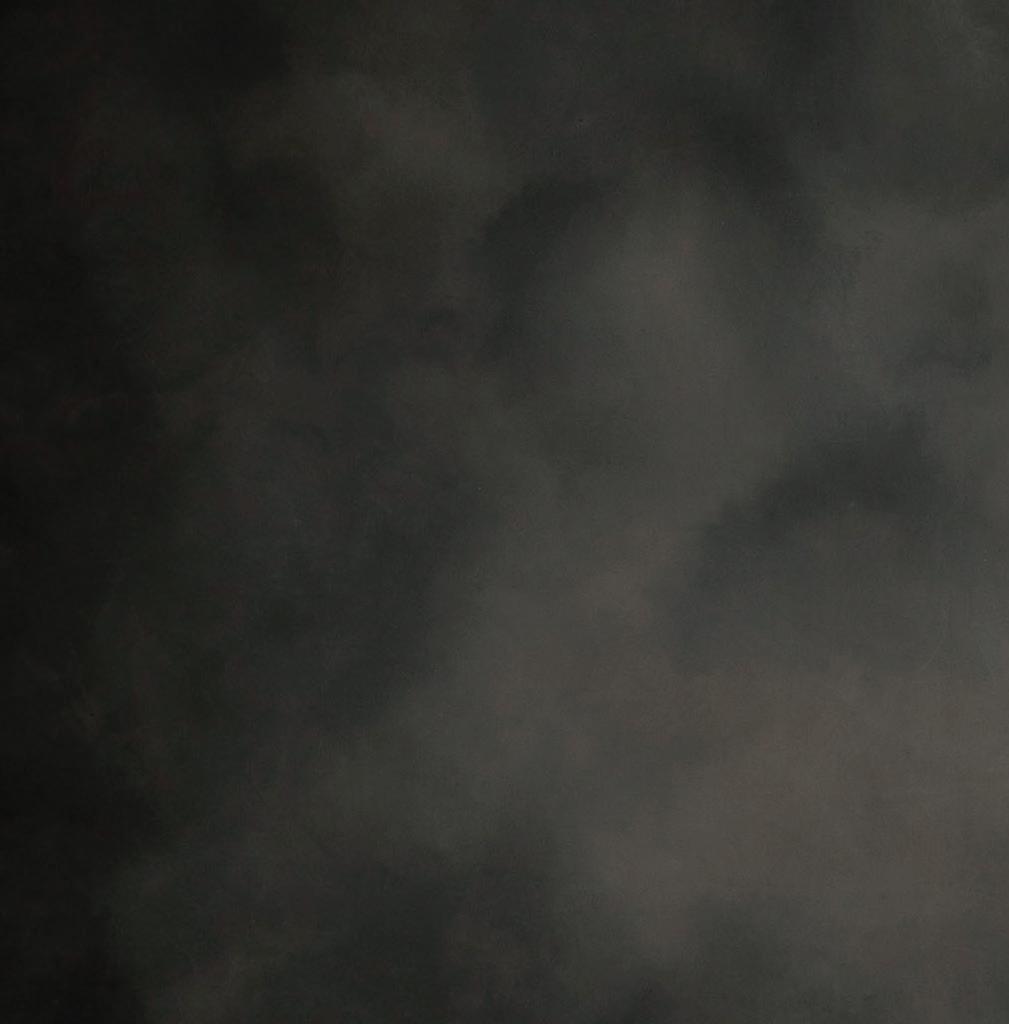
“As a writer, I enjoy spending time alone, and these surroundings are perfect: my apartment is quiet, and the views overlooking the Cleveland Museum of Art are lovely. But by far the best part of Judson is the people. Everyone is so knowledgeable about art and culture. I wanted to have stimulating company to spend my time with, and I’ve found that here. These are wonderful, interesting people,” says Joe.
Read the full story at judsonsmartliving.org/blog
Judson Park Cleveland Heights | Judson Manor University Circle | South Franklin Circle Chagrin Falls Learn more about how Judson can bring your retirement years to life! judsonsmartliving.org | 216.446.1579
“Expanding my curiosity about life is what it’s all about.”
Joe Coyle
2022/2023 SEASON
Boléro
Thursday, February 2, 2023, at 7:30 p.m.
Friday, February 3, 2023, at 7:30 p.m.
Saturday, February 4, 2023, at 8:00 p.m.
Sunday, February 5, 2023, at 3:00 p.m.
Klaus Mäkelä, conductor
Andrew Norman (b. 1979)
Claude Debussy (1862–1918)
Maurice Ravel (1875–1937)
Approximate
Thank you for silencing your electronic devices.
clevelandorchestra.com Sustain 35 minutes INTERMISSION 20 minutes Images 35 minutes
Gigues II. Ibéria III. Rondes de printemps
15 minutes
I.
Boléro
running
45
time: 1 hour
minutes
COVER: PHOTO BY
THE CLEVELAND ORCHESTRA 2022/2023 Season Sponsor
JACK, JOSEPH AND MORTON MANDEL CONCERT HALL AT SEVERANCE MUSIC CENTER
ROGER MASTROIANNI
Start
New Year with 2x the impact for music!
Stand Partners are a group of music-loving friends who donate monthly to the Orchestra. It’s simple: Just set your gift and forget it!

And right now, your entire year’s worth of donations will be DOUBLED! Thanks to a matching challenge, you’ll make 2x the impact for music all year long when you become a Stand Partner by February 15.
Plus, you’ll unlock one-of-a-kind gifts just for you — like our popular “Stand for Music” tote at $10 per month!


Become

• Visit clevelandorchestra.com/standpartner

• Call Donor Services at 216-456-8400

• Or scan the QR code

your
a Stand Partner today, and your year’s worth of gifts will be doubled!
Scan for more information.
“REPETITION IS THE MOTHER OF ALL LEARNING,” claims an oft-repeated Latin proverb, and, fittingly, variations of this phrase have filtered down through the centuries. Every musician who’s been instructed, “practice, practice, practice,” intimately understands these values. It’s at the heart of mastering any skill, from baking pastries to shooting free throws: Lather, wash, repeat.
Yet, the ritual of repetition becomes a radical act in tonight’s concert, led by Klaus Mäkelä (right). Ravel’s Boléro, which anchors this program, notoriously presents a slow crescendo unfolding over 18 reiterations of the same Spanish theme. The rousing effect was immediately embraced by audiences (and still is), but it provoked an equally passionate backlash among fellow composers. Even Ravel himself was irritated by Boléro’s runaway success.
Speaking to the London Daily Telegraph in 1931, Ravel admitted: “There are no contrasts, and there is practically no invention except in the plan and the manner of the execution.” Rather than compose variations on the theme or modulate the melody, Ravel unleashes his brilliance through his deft orchestration. As the catchy tune weaves around in surprising and unfamiliar combinations, he paints new, distinct soundworlds — sweet, seductive, mysterious, humorous, strident, bombastic.
Andrew Norman’s Sustain, which receives its Cleveland premiere at the top of the program, is also a study in repetition. More ambitious in scope

than Ravel’s so-called “experiment,” Norman’s Sustain harnesses time rather than instrumentation as his medium. Each of the 10 cycles of the same melodic material that comprise the piece is played about three times faster than last, forging new textures and momentums to earth-shattering effects. As the work hurtles forward, it encounters galaxies, black holes, and big bangs.
In between these two tightly structured works, Debussy’s evocative Images for orchestra echoes a recurrent theme from his catalogue. The composer twice employed the title “Images” — both in compositions for solo piano — before assembling a large symphonic orchestra to illustrate a triptych of scenes. Within these depictions of a sombre dance, a Spanish setting, and spring coming into bloom, Debussy delights in giving the listener a second chance to listen to a beautiful phrase or experience again a poignant melody, finding new sonorities and nuances in each reprise.
— Amanda Angel
THE CLEVELAND ORCHESTRA | 3 clevelandorchestra.com
INTRODUCTION
PHOTO BY MARCO BORGGREVE
Sustain
By Andrew Norman
BORN : October 31, 1979, in Grand Rapids, Michigan
Ω COMPOSED : 2018
Ω WORLD PREMIERE: October 4, 2018, by the Los Angeles Philharmonic with conductor Gustavo Dudamel
Ω CLEVELAND ORCHESTRA PREMIERE: This weekend’s concerts mark the first performances of Sustain by The Cleveland Orchestra.
Ω ORCHESTRATION: 3 flutes (3rd doubling piccolo), 3 oboes, 3 clarinets, 3 bassoons, 4 horns, 4 trumpets, 3 trombones, tuba, timpani, percussion (vibraphone, suspended plywood, bongos, triangle, suspended cymbals, temple blocks, vibraphone, bell tree, log drums, chimes), harp, two pianos (one tuned down a quarter tone), and strings
Ω DURATION: about 35 minutes
ON THE SURFACE , Andrew Norman’s Sustain presents a simple idea: 10 repetitions of the same material, with each repetition exponentially faster than the last. However, merely describing the blueprint of the piece belies the vast range of expression within its rigorous structure. Norman’s particular compositional gift lies not in standard harmonic or melodic writing, but in crafting entire metaphysical landscapes complete with dilations of time and space, gravitational centers, acoustic recreations of digital effects, and other Modern compositional tools that challenge the efficacy of our senses. If you consider the “purpose” of the symphonic tradition to be a general ledger of civilization over the last 400 years, meant to record the desires, night-
mares, triumphs, and technologies of the times, then there is no more perfect rendering of our moment, careening toward an uncertain future, than Sustain.
Commissioned by the Los Angeles
Philharmonic to write a large-scale orchestral work for its centenary celebration, Norman found his starting point in the most basic, essential building block at any composer’s disposal: time. In contrast to “fixed” arts like painting or sculpture, symphonic writing is able to sculpt with time itself. Through the prism of the orchestra, Norman composes a spectrum of temporalities, covering everything from colossal timescales of stars or mountain ranges to those more recognizable to us: a season, an afternoon nap, a passing thought.
4 | 2022/2023 SEASON
THE MUSIC

THE CLEVELAND ORCHESTRA | 5 clevelandorchestra.com
PHOTO BY JESSA ANDERSON
A rising flourish by two iridescent pianos (tuned a quarter tone apart), serves as a guidepost on this harrowing journey. Placed on opposite ends of the stage, they act as bookends to the cycles, signaling the start of each of the 10 repetitions. Between these markers expands a seductive dreamworld, where themes don’t have variations, but instead melt, freeze, evaporate, or sublimate. Within each repetition, the music gradually coalesces around and is eventually pulled into a gravitational center of terrifying proportions. Once the material reaches the singularity, it is spat back out into inky black space, losing momentum as it succumbs to entropy.
One of the great joys of experiencing Sustain is to find new momentums and connective tissues as each cycle proceeds. Something that was scarcely perceptible in the first iteration might become tactile in the second and fundamental in the third. Elements that seemed unrelated at first glance are vulcanized into novel materials, while familiar motifs — glittering vibraphone chords or a yearning melody for solo flute — are subsumed by greater momentums.
Eventually, we discover that we are inextricably being drawn toward an even larger locus, an event horizon that annihilates absolutely everything in its orbit. As we hurtle to this final, total destruction, the conductor can no longer maintain control; Norman instructs certain wind musicians to “go crazy.”
The delicate architecture, bounded by
the previously reliable pair of quartertone pianos, implodes into cacophony.
But this is not the end. The spiral form has played itself out, but what are we left with? In his program note, Norman states that Sustain asks “bottomless” questions, but I hear the coda as something specifically human and reflective, in contrast to the scientific rigor of the preceding 25 minutes. We’ve entered a sort of sound bath, with shimmering piano interplay, reminiscences of wind chimes, and the gentle lapping of waves. During this aural Savasana, I sometimes find that I’ve forgotten, if only for a couple of minutes, that I occupy one body, in one place, at one time.
When asked about this ending, Norman answered with his own questions: “As I saw all my musical materials contracting into the vortex at the heart of the work, the questions became clear to me: What lies in the aftermath of apocalypse? What happens after the end of history? When the old rules collapse into a point of nothingness, what remains in their wake? My mind turned to galaxies and black holes and big bangs, and the image of an orchestra, once tightly coordinated by the gravitational pulls of a conductor’s inexorable beat, now completely untethered, a collection of free-floating, individual molecules wafting through space to their own chance-determined ends.”
— Ian Mercer
6 | 2022/2023 SEASON THE MUSIC
Ian Mercer is The Cleveland Orchestra’s production manager.
Composer’s Note
My first thought in writing Sustain was to imagine the audience that will sit in Disney Hall 100 years from now, during the 200th season of the Los Angeles Philharmonic. What will it mean to gather as a community and listen to an orchestra in 2118? How will the ears and minds of those people be different from ours? How will they be the same? How will their notions of time and space and sound and history be shaped by the world around them, and what will that world outside Disney Hall look like? What place will the art of live symphonic performance have in such a society?
These are broad and bottomless questions which led me in many directions, but gradually they coalesced around a pair of subjects. The first is time. Perhaps, 100 years from now, the act of sitting quietly and listening to a symphonic argument unfold over 45 minutes will mean even more than it does today. Perhaps, in a time when humans will be bombarded with increasingly atomized bits of information, when overstimulation, fragmentation, and isolation will be the given norms of experience and discourse, perhaps then communal listening to a single, long unbroken musical thought will carry a kind of significance, sacrifice, and otherness we can’t yet really imagine.
I realized, as I was trying to conceptualize Sustain as a one long unbroken musical thought, that I was attempting to access and understand spans of time that were much bigger than my own, that I was trying to move from times with which I was familiar — that of a tweet, or a work day, or a year — to things I could never personally experience, like the rise and fall of species, the movement of tectonic plates, the birth and death of stars.
Structurally speaking, Sustain is cast in the form of a contracting spiral. It repeats the same music 10 times in a row, each repetition being roughly three times faster than the time before. What takes many minutes to unfold at the beginning flies by in a few seconds toward the work’s center.
All this thinking about time and proportion brought me around to what is perhaps at the heart this piece: the natural world. Midway through writing Sustain I discovered that I was really writing a piece about the earth, and my — and our — relationship to it. All the work I was doing with long spans of musical time and geologically unfolding sonic processes was in many ways my attempt to place us, the listeners in Disney Hall, in relation to things in nature which are unfathomably bigger and longer than we are. And if there is a sense of sadness or loss that permeates this music, it comes from the knowledge that we, at this critical moment in our history, are not doing enough to sustain the planet that sustains us, that we are not preparing our home for those who will inhabit it in the next hundred, thousand, or million years.
— Andrew Norman

THE CLEVELAND ORCHESTRA | 7 clevelandorchestra.com PHOTO
BY CRAIG T. MATTHEW
Images
By Claude Debussy
BORN : August 22, 1862, in St. Germain-en-Laye, France
DIED: March 25, 1918, in Paris
Ω COMPOSED : 1905–12
Ω WORLD PREMIERE : Ibéria was the first of the three pieces that comprise Debussy’s Images to premiere, on February 20, 1910, with Gabriel Pierné conducting. Rondes de printemps followed on March 2, under the direction of the composer. Gigues was first performed on January 26, 1913, under the baton of André Caplet, who helped orchestrate the work.
Ω CLEVELAND ORCHESTRA PREMIERE : Each of the three parts of Images also debuted in Cleveland separately: Nikolai Sokoloff led the first performances of Ibéria in January 1921; Rondes de printemps came next, in 1937, with conductor Carlos Chavez; and Gigues entered the Orchestra’s repertoire in 1951, when Pierre Monteux led the Orchestra in the complete work for the first time.
Ω ORCHESTRATION : 3 flutes (3rd doubling piccolo), piccolo, 2 oboes, english horn, oboe d’amore, 3 clarinets, bass clarinet, 3 bassoons, contrabassoon, 4 horns, 4 trumpets, 3 trombones, tuba, timpani, percussion (castanets, xylophone, tambourine, snare drum, chimes, tambourin provençal), 2 harps, celeste, and strings
Ω DURATION : 35 minutes
THE ASSOCIATION OF MUSIC and images is a fundamental characteristic of Claude Debussy’s works. In addition to the many specific physical references on which he based compositions — from the ocean in La Mer to all kinds of landscapes and portraits in the two books of piano preludes — the word Images appeared in an early set of piano pieces (1894) and in two better-known sets for piano (1905–08), before this title was used again for the orchestral Images
It was natural for Debussy to think in musical images. He was a great lover of art and counted many painters among his friends. But his artistic vision went beyond mere musical representation of a subject. For Debussy, his images were seen or dreamed by the mind’s eye and then realized in his colorful soundworld.
In the case of the orchestral Images, the tableaux primarily capture motion combined with the senses of sight, hearing, and even smell — the middle
8 | 2022/2023 SEASON THE MUSIC
section of Ibéria evokes nighttime aromas. As Charles Baudelaire, one of Debussy’s favorite poets, put it: “Les parfums, les couleurs et les sons se répondent…” (“The fragrances, the colors, and the sounds answer one another…”).
GIGUES
In the first section, Gigues, Debussy initially planned to append the adjective “triste,” or “sad,” to the title, according to a letter to his publisher Durand from 1905. No doubt, the idea of turning a cheerful dance into a melancholy melody was already present in his mind years before the composition was written.

The melody is derived from an English country dance or jig, related to but different from the Baroque gigue. Debussy had visited England on many occasions, and he may have come across
this melody on one of his trips, or he may have borrowed it from the song
“Dansons la gigue” (“Let’s dance the jig”) by his contemporary Charles Bordes (1863–1909).
After a brief introduction with a typically Debussyan combination of harp, celeste, and woodwinds, the jig melody is played by unaccompanied oboe d’amore (a double-reed instrument whose pitch lies between the oboe and the english horn). The other woodwinds and the horns play a faster rhythmic variant of this tune while the oboe d’amore keeps repeating its own, more soulful version of it. The music gets more and more agitated as the rhythmic pattern of the faster-moving material is developed in a powerful orchestral crescendo that suddenly breaks off. The sad jig tune returns, the tempo gradually slows down, the music gets ever softer, and finally fades into silence.
André Caplet, who collaborated with Debussy on the score of Gigues, wrote about the work in 1923: “Gigues … Sad Gigues… tragic Gigues… The portrait of a soul… a soul in pain, uttering its slow, lingering lamentation on the reed of an oboe d’amore. … Underneath the convulsive shudderings, the sudden efforts at restraint, the pitiful grimaces, which serve as a kind of disguise, we recognize the very soul of our dear, great Claude Debussy. We find there the spirit of sadness, infinite sadness, lying stretched as in the bed of a river whose flow, constantly augmented from new sources, increases inevitably, mercilessly.”
THE CLEVELAND ORCHESTRA | 9 clevelandorchestra.com
Like the French Impressionist painters, composer Claude Debussy sought to capture fleeting moments in his music.
PHOTO COURTESY OF WIKIMEDIA COMMONS
French musicians had often been inspired by the rhythms of Spanish music — the greatest example being Bizet’s opera Carmen, which premiered in 1875. Two other composers in particular owed their fame to Spanishinfluenced compositions: Édouard
Lalo’s Symphonie espagnole (1875) and Emmanuel Chabrier’s España (1883). Both works must have been well known to the young Debussy, who wrote his own La soirée dans Grenade (“Evening in Grenada”) for solo piano in 1903.
Aside from one short trip across the border, Debussy never visited Spain. But he was familiar with works by composers on the other side of the Pyrenees such as Manuel de Falla and Isaac Albéniz. The latter composed a magnificent four-volume suite for piano titled Ibéria (1905–08), and Falla praised Debussy’s Ibéria, saying it had “a considerable and decisive influence on young Spanish composers.”
The first section of Ibéria, “Par les rues et par les chemins” (“In the Streets and Byways”), immediately creates a Spanish atmosphere with the sound of castanets. A whole town floods the streets on a warm summer evening. People walk, talk, sing, and dance. The clarinets play a dance marked by the composer as “elegant and rhythmic” and harmonized with parallel chords (one of Debussy’s recurrent techniques). Later, the horns and clarinets intone an equally cheerful second theme, soon combined with a third melody which, in contrast, is
more lyrical and expressive in character. The first theme with the castanet accompaniment finally returns (now played by the oboes instead of the clarinets). At last, the noisy parade is over; the people go home and the section quiets down to a pianissimo.
The second section is called “Les parfums de la nuit” (“The Fragrances of the Night”). Falla perceived here “the intoxicating spell of Andalusian nights,” which he must have known having been born in that province of Spain. Several factors contribute to the magic of this movement, including a virtuosic orchestration that makes sophisticated use of divided strings. For example, at one point the first violins split into seven

10 | 2022/2023 SEASON THE MUSIC
IBÉRIA
IMAGE COURTESY OF THE METROPOLITAN MUSEUM OF ART / H. O. HAVEMEYER COLLECTION, BEQUEST OF MRS. H. O. HAVEMEYER, 1929
Édouard Manet’s painting, Mademoiselle V...in the Costume of an Espada (1862), depicts model Victorine Meurent in a matador’s costume, showing the French fascination with Spanish culture.
different groups, all playing with special techniques such as glissandos and harmonics. The celeste part is every bit as celestial as the instrument’s name. The chords are again parallel, with every part moving by the same interval regardless of keys; as a result, we get the so-called “whole-tone scale” (C, D, E, F-sharp, G-sharp, A-sharp), where any note may serve as a temporary or permanent resting-point. As a result, the music seems to hover in the air, never touching the ground or reaching closure.
The third section of Ibéria, “Le matin d’un jour de fête” (“The Morning of a Festival Day”) follows without interruption. As the day begins to break, we hear the distant sound of a drum with some softly plucked string pizzicatos. The night music returns for a moment in the form of a three-measure flute solo. The violins and violas imitate guitars — Debussy instructs half the players to hold their instruments like guitars. The clarinets are instructed to play “very cheerfully, exaggerating the accents,” the violin solo, full of double stops, must be “free and whimsical,” the oboe and english horn parts “merry and whimsical.”
RONDES DE PRINTEMPS
The final section, translated as “Round Dances of Spring,” opens with an atmosphere of warmth and serenity, though at the 1910 premiere, according to Debussy biographer Léon Vallas, “the very high pitch of the violins, the sudden gusts of thirds in the wind instruments, the
rough sonorities of certain passages, suggested to some people icy blasts rather than the gentle breezes of spring.”
Following the introduction, Debussy includes a rare quote of a French folksong in one of his works: “Nous n’irons plus au bois” (“We won’t go to the woods anymore”). This melody — which also appears in his piano piece Jardins sous la pluie (“Gardens in the Rain”), from the cycle Estampes — is transformed in various ways, some derived from the Baroque contrapuntal techniques known as stretto and augmentation. This is also the only movement of Images to bear a dedication, inscribed to Debussy’s second wife, Emma.
After undergoing various rhythmic transformations, the folksong is played in long and strongly accented notes by the clarinets and the english horn, only to crumble away to tiny motifs, suddenly cut short by a powerful glissando by the harp and celeste that brings the piece to a close.
According to the composer’s correspondence with his publisher, Debussy was torn between choosing from three potential endings. “Shall I toss up between them,” he wrote, “or try to find a fourth solution?” He finally opted for a big crescendo, “brisk and vigorous.”
The last word belongs to the trombones, which cap the piece with a stupendous three-part sliding glissando.
— Peter Laki
THE CLEVELAND ORCHESTRA | 11 clevelandorchestra.com
Peter Laki is a musicologist and frequent lecturer on classical music. He is a visiting associate professor at Bard College.
Boléro
By Maurice Ravel
BORN : March 7, 1875, in Ciboure, Basses-Pyrénées, France
DIED: December 28, 1937, in Paris
Ω COMPOSED : 1928
Ω WORLD PREMIERE : November 22, 1928, at the Paris Opera in a performance by Ida Rubinstein’s dance company, with the founder in the main role, choreography by Bronislava Nijinska, and sets and costumes by Alexandre Benois.
Ω CLEVELAND ORCHESTRA PREMIERE : October 16, 1930, with Nikolai Sokoloff conducting
Ω ORCHESTRATION : 2 flutes (2nd doubling piccolo), piccolo, 2 oboes (2nd doubling oboe d’amore), english horn, 2 clarinets, bass clarinet, E-flat clarinet, soprano saxophone (doubling tenor saxophone), 2 bassoons, contrabassoon, 4 horns, 4 trumpets, 3 trombones, tuba, timpani, percussion (bass drum, cymbals, 2 snare drums, tam-tam), harp, celeste, and strings
Ω DURATION : 15 minutes
RAVEL DID NOT EXPECT Boléro to be a hit. He was simply fulfilling an obligation to write a piece of music. He’d been asked by the Russian ballerina Ida Rubinstein to write a new ballet with a Spanish theme. Her original request involved orchestrating some piano works by Isaac Albéniz, a relatively easier task than writing new music. But it turned out that the Albéniz pieces had already been arranged for orchestra — and copyright restrictions wouldn’t allow another version. So Ravel struck out on his own, looking for something interesting but not too time consuming. Eventu-
ally, he settled on the idea of an orchestration exercise, applied to a strangely meandering melody of his own devising, set against a steady and unchanging Spanish rhythm.
The mastery of Ravel is not in conjuring this exercise, but in the extraordinarily consummate skill with which he infused a unique musical message into a simple formula and idea. Somehow, Ravel managed just the right combination of stasis and change, keeping the piece in a narrow region between monotony and wildfire. New instruments are added precisely when the music requires an
12 | 2022/2023 SEASON THE MUSIC
infusion of energy or a modulation of tone and texture, but never in a predictable way or pace. In a good performance, the tension builds, ever climbing to a blazing climax, and at the moment this peak is scaled, it abruptly releases to extended applause. In a great performance, the result can be mesmerizing, tantalizing, and palpably bone tingling.
From the first beat, the snare drum taps out a driving rhythm that propels the entire piece. A wandering melody starts to snake its way through the
orchestra, starting with solo flute, next clarinet, followed by the bassoon, up through the high-pitched E-flat clarinet, before descending to the oboe d’amore (a double reed pitched between an oboe and english horn). More instruments take their turns: trumpet with flute, the unusual addition of saxophones, twinkling celeste and mellow horn, a quartet
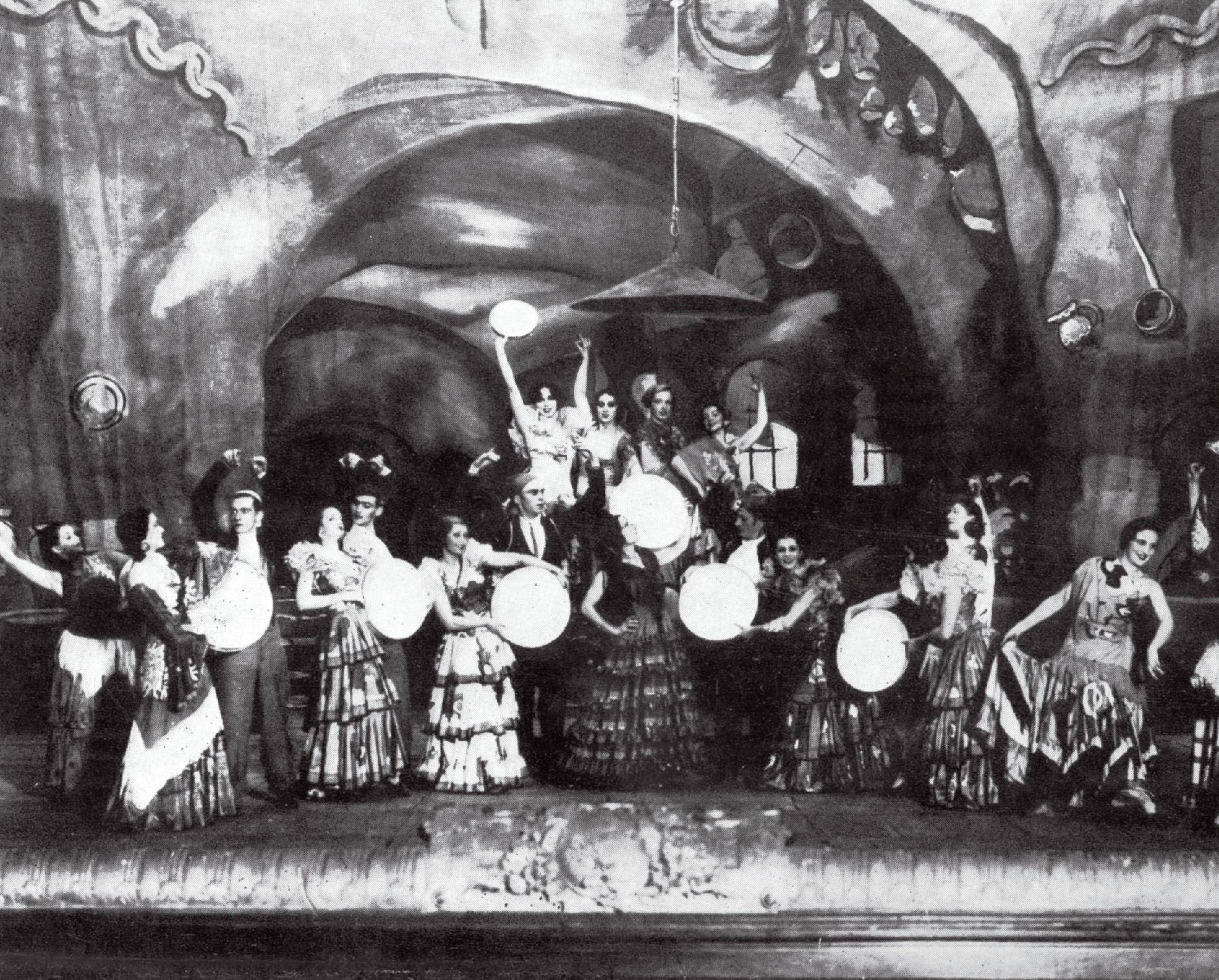
THE CLEVELAND ORCHESTRA | 13 clevelandorchestra.com
IMAGE COURTESY OF LEBRECHT MUSIC & ARTS / ALAMY STOCK PHOTO
Maurice Ravel wrote the Spanish-themed Boléro for Ida Rubinstein’s dance company, captured here during one of the first performances at the Paris Opera.
of reeds emulating an organ, an inebriated-sounding trombone sliding from note to note, the highest-pitched woodwinds carrying the melody into the stratosphere, and finally the strings enter.
From here to the end, everything continues building, with entire sections jumping in, more trumpets, more strings, raucous trombones, and crashing cymbals. Then suddenly, almost unexpectedly, it ends.
Boléro was a sensation at its premiere in Paris in 1928 — the music overshadowing the choreography —and the piece quickly took on a life of its own in the concert hall (and radio and recordings and movies and more).
Ravel was astonished — and even perturbed — by its quick rise to popularity. In 1931, he stated that Boléro “constitutes an experiment in a very special and limited direction, and should not be suspected of aiming at achieving anything different from, or anything more than, it actually does achieve. Before its first performance, I issued a warning to the effect that what I had written was a piece lasting seventeen minutes and consisting wholly of ‘orchestration without music’ — of one very long,


gradual crescendo. There are no contrasts, and practically no invention except the plan and the manner of execution.” Just so, and it works magnificently.
— Eric Sellen
14 | 2022/2023 SEASON
One of the greatest orchestrators of his day, Maurice Ravel’s ability to create a rich tapestry of colorful soundworlds is fully realized in Boléro. Much to the chagrin of the composer, Boléro remains his most popular work, immortalized by the gold-medal routine that ice dancers Jayne Torvill and Christopher Dean performed at the 1984 Olympics.
THE MUSIC LEFT: IMAGE COURTESY OF BIBLIOTHÈQUE NATIONALE DE FRANCE | TOP: IMAGE COURTESY OF WORLD HISTORY ARCHIVE / ALAMY STOCK PHOTO
Eric Sellen is The Cleveland Orchestra’s editor emeritus. He previously was program book editor for 28 seasons.
State and federal dollars through the Ohio Arts Council supported your arts experience today.



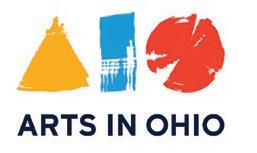

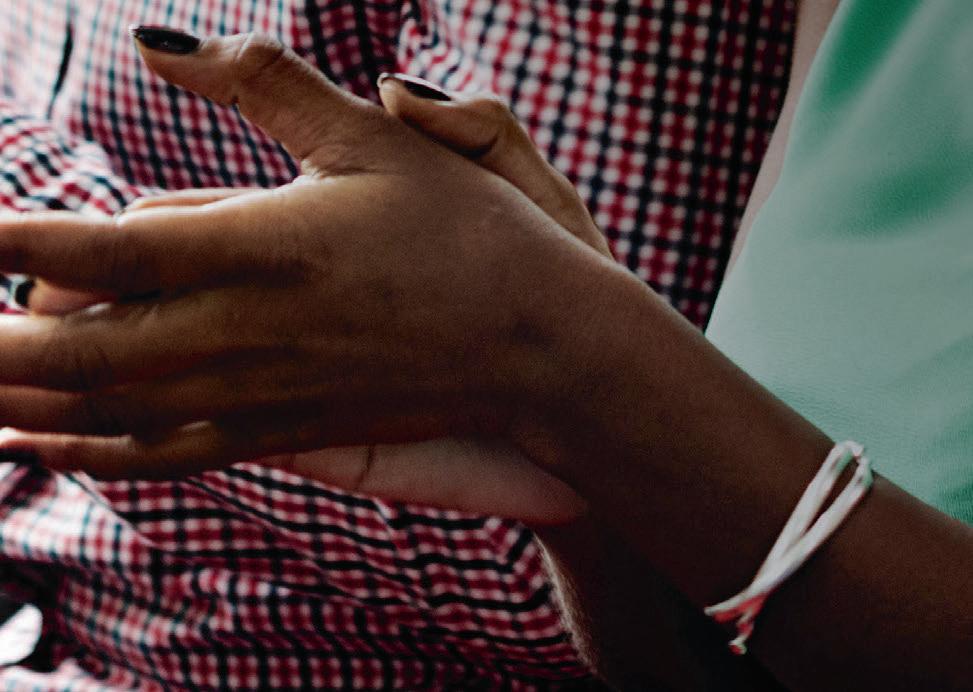

WHERE WILL THE ARTS TAKE YOU NEXT ? VISIT ARTSINOHIO.COM

@OHIOARTSCOUNCIL | #ARTSOHIO | OAC.OHIO.GOV
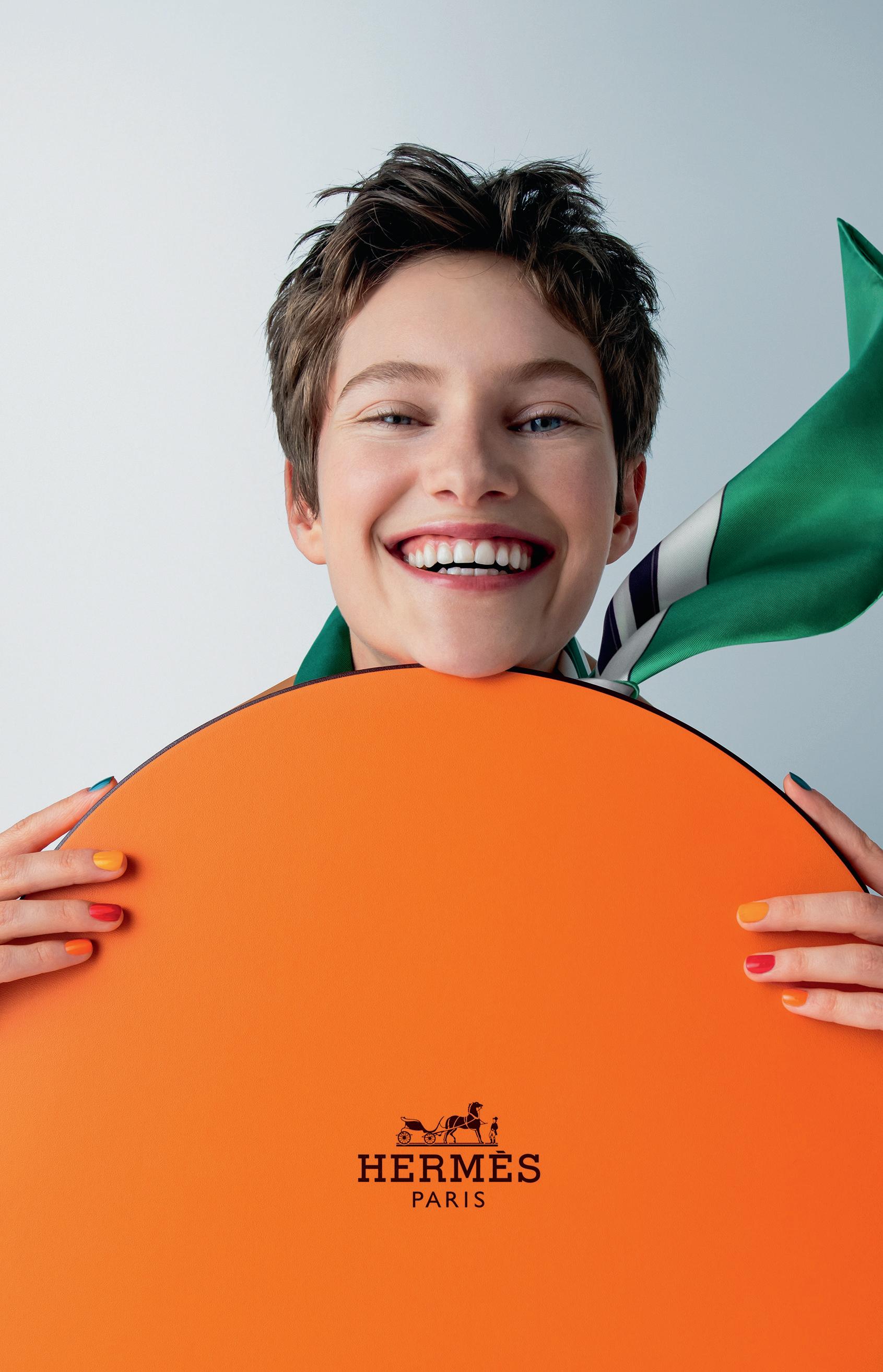
Klaus Mäkelä, Conductor
KLAUS MÄKELÄ IS CHIEF CONDUCTOR
of the Oslo Philharmonic Orchestra, music director of Orchestre de Paris, and, since autumn 2022, artistic partner of the Concertgebouworkest. An exclusive Decca Classics artist, he has recorded the complete Sibelius Symphony cycle with the Oslo Philharmonic as his first project for the label.

Mr. Mäkelä’s third season with the Oslo Philharmonic features 11 contrasting programs, with repertoire ranging from Jean-Baptiste Lully and Pietro
Locatelli to Alban Berg and Gustav Mahler to Anna Thorvaldsdottir and Julia Perry. In fall 2022, Mr. Mäkelä and the Oslo Philharmonic embarked on their second European tour with performances in Germany, Belgium, and Austria with soloist Sol Gabetta.
For his second season with the Orchestre de Paris, Mr. Mäkelä has chosen to spotlight living composers
Pascal Dusapin, Betsy Jolas, Jimmy
López Bellido, Magnus Lindberg, and Kaija Saariaho, the latter featured with three different works. There is also a focus on the Ballets Russes with two key Diaghilev scores by Stravinsky: The Firebird and The Rite of Spring. In spring 2023, Mr. Mäkelä and Orchestre de Paris tour throughout Europe with Janine Jansen as soloist.
With the Concertgebouworkest Klaus Mäkelä embarks on a long-term collaboration this season, joining the orchestra as its artistic partner with his eventual
appointment to chief conductor in 2027. For their first season together, they perform six programs including Mahler’s Symphony No. 6, the Mozart Requiem, and Strauss’s Alpine Symphony, as well as premieres by López Bellido, Sauli Zinovjev, Alexander Raskatov, and Sally Beamish. On tour, they performed the opening concert of Musikfest Berlin and at the Cologne Philharmonie.
As a guest conductor in the 2022–23 season, Mr. Mäkelä makes his first appearances with the New York Philharmonic, Berliner Philharmoniker, Gewandhausorchester, and Wiener Symphoniker; and returns to The Cleveland Orchestra, where he’ll lead two consecutive programs, and Chicago Symphony Orchestra.
Klaus Mäkelä studied conducting at the Sibelius Academy with Jorma Panula and cello with Marko Ylönen, Timo
Hanhinen, and Hannu Kiiski. As a soloist, he has performed with several Finnish orchestras and as a chamber musician at the Verbier Festival, among others.
THE CLEVELAND ORCHESTRA | 17 clevelandorchestra.com THE
CONDUCTOR
PHOTO BY JEROME BONNET
LJI

Customer

NOW
LJI builds confidence in every customer and ensures quality repairs and superior customer service. Our commitment is to achieve and retain customer loyalty for life!


™
Chagrin Blvd. at I-271 Orange Village (216)364-7100
Lee Rd. at Mayfield Cleveland Hts. (216) 932-7100
builds confidence in every customer and ensures quality repairs and superior customer service. Our commitment is to achieve and retain customer loyalty for life! 27100
1640
Confidence – Priority One™ ljicollisioncenter.com
TWO LOCATIONS Customer
Confidence –
fourth generation in the industry
Lauren Angie Jill Strauss
TWO LOCATIONS
THE CLEVELAND ORCHESTRA DIGITAL CONCERTS STREAMING NOW!
Adella, our streaming service and app, features on-demand portraits, music showcases, behind-the-scenes footage and our flagship In Focus premium concert series, available anytime & anywhere

Premiering this Friday!
Shades of Light
February 3 | 7:00 p.m.
Longtime friend, Alan Gilbert, leads The Cleveland Orchestra in a shimmering program. Two works by impressionistic masters — Lili Boulanger’s D’un matin de printemps and Claude Debussy’s La mer — paired with Unsuk Chin’s brilliantly wrought Rocaná round out this vivid episode.

ALSO AVAILABLE: The Drive
This weekend’s conductor, Klaus Mäkelä, partners up for the first time with conductor/ violinist Nikolaj Szeps-Znaider for an extraordinary rendering of Sibelius’s beloved Violin Concerto, before launching into a furious rendition of Shostakovich’s Tenth Symphony.

Visit Adella.live to start your free trial.
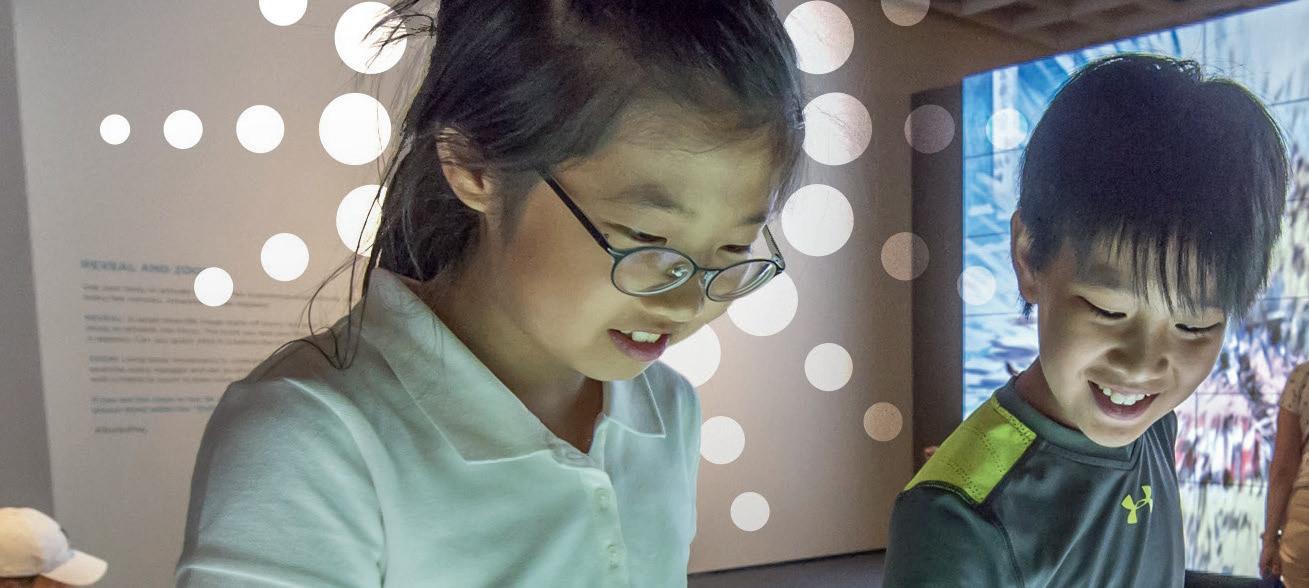





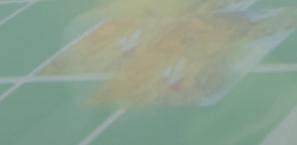




















IF YOU’RE LOOKING TO E P L O R E ON L I NE ClevelandArtsEvents .com connects you to the region’s vibrant arts and culture scene. With just a few clicks, discover hundreds of events made possible in part with public funding from Cuyahoga Arts & Culture. get in touch with art. ARTLENS Gallery | The Cleveland Museum of Art IMAGE COURTESY OF











Do YOU LOVE Horseshoe Lake? Do YOU want to HELP SAVE Horseshoe Lake? Check Out the Horseshoe Lake Restoration Plan www.SaveHorseshoeLake.com/FOHSL-Plan TCO REWARDS It’s easy to get TCO Rewards points and earn your way toward great perks like seat upgrades, merchandise, exclusive content, and more! IT’S FREE TCO Rewards are a FREE feature of your Cleveland Orchestra account. Simply login, or create an account and click Rewards. IT’S EASY Earn points for all the things you already do with The Cleveland Orchestra, such as attend concerts, watch videos, and read articles. GREAT PERKS Use your points to get great perks like tickets, merchandise, VIP experiences, and exclusive content. SPECIAL OFFER Enter 2223PROGRAM and earn 10 bonus points clevelandorchestra.com/rewards The place for fans of The Cleveland Orchestra!
NOW IN ITS SECOND CENTURY , The Cleveland Orchestra, under the leadership of music director Franz WelserMöst since 2002, is one of the most sought-after performing ensembles in the world. Year after year, the ensemble exemplifies extraordinary artistic excellence, creative programming, and community engagement. The New York Times has called Cleveland “the best in America” for its virtuosity, elegance of sound, variety of color, and chamberlike musical cohesion.
Founded by Adella Prentiss Hughes, the Orchestra performed its inaugural concert in December 1918. By the middle of the century, decades of growth and sustained support had turned it into one of the most admired globally.
The past decade has seen an increasing number of young people attending concerts, bringing fresh attention to The Cleveland Orchestra’s legendary sound and committed programming. More recently, the Orchestra launched several bold digital projects, including the streaming broadcast series In Focus, the podcast On a Personal Note, and its own recording label, a new chapter in the Orchestra’s long and distinguished recording and broadcast history. Together, they have captured the Orchestra’s unique artistry and the musical achievements of the Welser-Möst and Cleveland Orchestra partnership.

The 2022/23 season marks Franz Welser-Möst’s 21st year as music director, a period in which The Cleveland Orchestra earned unprecedented acclaim around the world, including a series of residencies at the Musikverein in Vienna, the first of its kind by an American orchestra, and a number of acclaimed opera presentations.
Since 1918, seven music directors — Nikolai Sokoloff, Artur Rodziński, Erich Leinsdorf, George Szell, Lorin Maazel, Christoph von Dohnányi, and Franz Welser-Möst — have guided and shaped the ensemble’s growth and sound. Through concerts at home and on tour, broadcasts, and a catalog of acclaimed recordings, The Cleveland Orchestra is heard today by a growing group of fans around the world.

22 | 2022/2023 SEASON THE CLEVELAND ORCHESTRA
@clevelandorchestra @CleveOrchestra @Cleveorch
@ClevelandOrchestra
PHOTO BY ROGER MASTROIANNI


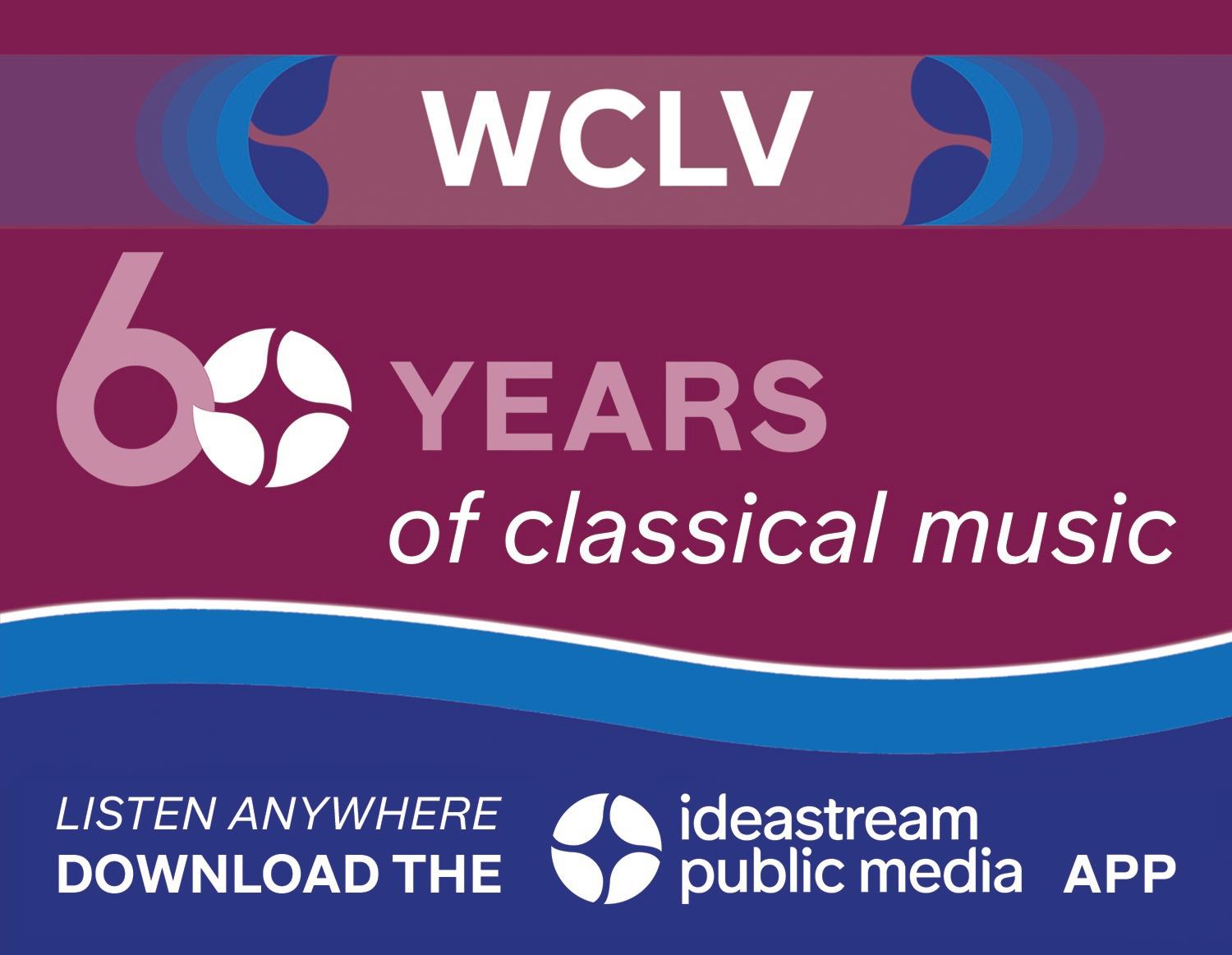
34300 Solon Road | Solon, OH | 440-248-2424 | 800-260-2949 One block south of Rt. 422 & SOM Center Road 9-9 M/Th | 9-5:30 Tu/W/F/Sa | www.sedlakinteriors.com Complimentary Delivery and Set-Up Within 60 Miles. Experience the largest collection of upholstered, leather and motion furniture in Northeast Ohio. Need a More Comfortable Seat? CELEBRATING
THE CLEVELAND ORCHESTRA
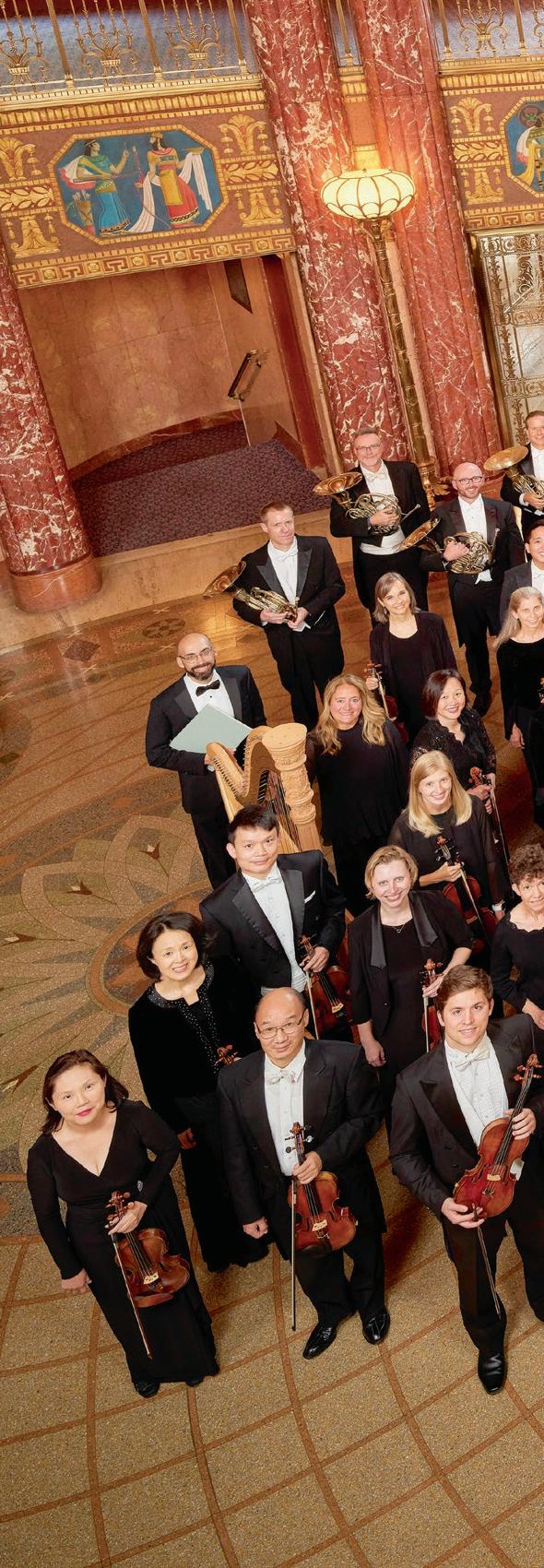
Franz Welser-Möst, MUSIC DIRECTOR
Kelvin Smith Family Chair
FIRST VIOLINS
David Radzynski
CONCERTMASTER
Blossom-Lee Chair
Peter Otto
FIRST ASSOCIATE CONCERTMASTER
Virginia M. Lindseth, PhD, Chair
Jung-Min Amy Lee
ASSOCIATE CONCERTMASTER
Gretchen D. and Ward Smith Chair
Jessica Lee
ASSISTANT CONCERTMASTER
Clara G. and George P.
Bickford Chair
Stephen Tavani
ASSISTANT CONCERTMASTER
Wei-Fang Gu
Drs. Paul M. and Renate H.
Duchesneau Chair
Kim Gomez
Elizabeth and Leslie
Kondorossy Chair
Chul-In Park
Harriet T. and David L.
Simon Chair
Miho Hashizume
Theodore Rautenberg
Chair
Jeanne Preucil Rose
Larry J.B. and Barbara S.
Robinson Chair
Alicia Koelz
Oswald and Phyllis Lerner
Gilroy Chair
Yu Yuan
Patty and John Collinson
Chair
Isabel Trautwein
Trevor and Jennie Jones
Chair
Katherine Bormann
Analisé Denise Kukelhan
Gladys B. Goetz Chair
Zhan Shu
SECOND VIOLINS
Stephen Rose*
Alfred M. and Clara T.
Rankin Chair
Eli Matthews1
Patricia M. Kozerefski and Richard J. Bogomolny
Chair
Sonja Braaten Molloy
Carolyn Gadiel Warner
Elayna Duitman
Ioana Missits
Jeffrey Zehngut
Sae Shiragami
Kathleen Collins
Beth Woodside
Emma Shook
Dr. Jeanette Grasselli
Brown and Dr. Glenn R. Brown Chair
Yun-Ting Lee
Jiah Chung Chapdelaine
VIOLAS
Wesley Collins*
Chaillé H. and Richard B.
Tullis Chair
Lynne Ramsey1
Charles M. and Janet G.
Kimball Chair
Stanley Konopka2
Mark Jackobs
Jean Wall Bennett Chair
Lisa Boyko
Richard and Nancy
Sneed Chair
Richard Waugh
Lembi Veskimets
The Morgan Sisters Chair
Eliesha Nelson
Joanna Patterson Zakany
William Bender
Gareth Zehngut
CELLOS
Mark Kosower*
Louis D. Beaumont Chair
Richard Weiss1
The GAR Foundation Chair
Charles Bernard2
Helen Weil Ross Chair
Bryan Dumm
Muriel and Noah Butkin
Chair
Tanya Ell
Thomas J. and Judith Fay
Gruber Chair
Ralph Curry
Brian Thornton
William P. Blair III Chair
David Alan Harrell
Martha Baldwin
Dane Johansen
Paul Kushious
BASSES
Maximilian Dimoff*
Clarence T. Reinberger Chair
Derek Zadinsky2
Mark Atherton
Thomas Sperl
Henry Peyrebrune
Charles Barr Memorial Chair
Charles Carleton
Scott Dixon
Charles Paul
HARP
Trina Struble*
Alice Chalifoux Chair
FLUTES
Joshua Smith*
Elizabeth M. and William C. Treuhaft Chair
Saeran St. Christopher
Jessica Sindell2
Austin B. and Ellen W.
Chinn Chair
Mary Kay Fink
PICCOLO
Mary Kay Fink
Anne M. and M. Roger Clapp Chair
OBOES
Frank Rosenwein*
Edith S. Taplin Chair
Corbin Stair
Sharon and Yoash Wiener Chair
Jeffrey Rathbun2
Everett D. and Eugenia S. McCurdy Chair
Robert Walters
ENGLISH HORN
Robert Walters
Samuel C. and Bernette K. Jaffe Chair
CLARINETS
Afendi Yusuf*
Robert Marcellus Chair
Robert Woolfrey
Victoire G. and Alfred M. Rankin, Jr. Chair
Daniel McKelway2
Robert R. and Vilma L. Kohn Chair
Amy Zoloto
E-FLAT CLARINET
Daniel McKelway
Stanley L. and Eloise M. Morgan Chair
BASS CLARINET
Amy Zoloto
Myrna and James Spira Chair
BASSOONS
John Clouser*
Louise Harkness Ingalls Chair
Gareth Thomas
Barrick Stees2
Sandra L. Haslinger Chair
Jonathan Sherwin
CONTRABASSOON
Jonathan Sherwin
HORNS
Nathaniel Silberschlag*
George Szell Memorial Chair
24 | 2022/2023 SEASON
Michael Mayhew§ Knight Foundation Chair
Jesse McCormick
Robert B. Benyo Chair
Hans Clebsch
Richard King
TRUMPETS
Michael Sachs* Robert and Eunice Podis
Weiskopf Chair
Jack Sutte
Lyle Steelman2
James P. and Dolores D. Storer Chair
Michael Miller
CORNETS
Michael Sachs*
Mary Elizabeth and G. Robert Klein Chair
Michael Miller
TROMBONES
Brian Wendel*
Gilbert W. and Louise I. Humphrey Chair
Richard Stout Alexander and Marianna C. McAfee Chair
Shachar Israel2
EUPHONIUM & BASS TRUMPET
Richard Stout
TUBA
Yasuhito Sugiyama*
Nathalie C. Spence and Nathalie S. Boswell Chair
TIMPANI
Paul Yancich*
Otto G. and Corinne T. Voss Chair
PERCUSSION
Marc Damoulakis*
Margaret Allen Ireland Chair
Donald Miller
Thomas Sherwood
KEYBOARD INSTRUMENTS
Carolyn Gadiel Warner
Marjory and Marc L. Swartzbaugh Chair
LIBRARIANS
Michael Ferraguto
Joe and Marlene Toot Chair
Donald Miller
ENDOWED CHAIRS CURRENTLY UNOCCUPIED
Elizabeth Ring and William
Gwinn Mather Chair
Paul and Lucille Jones Chair
James and Donna Reid
Chair
Mary E. and F. Joseph Callahan Chair
Sunshine Chair
Mr. and Mrs. Richard K. Smucker Chair
Rudolf Serkin Chair
CONDUCTORS
Christoph von Dohnányi MUSIC DIRECTOR
LAUREATE
Daniel Reith
ASSISTANT CONDUCTOR
Sidney and Doris Dworkin Chair
Lisa Wong
DIRECTOR OF CHORUSES
Frances P. and Chester C. Bolton Chair
* Principal
§ Associate Principal
1 First Assistant Principal
2 Assistant Principal
This roster lists full-time members of The Cleveland Orchestra. The number and seating of musicians onstage varies depending on the piece being performed. Seating within the string sections rotates on a periodic basis.

THE CLEVELAND ORCHESTRA | 25 clevelandorchestra.com
PHOTO BY ROGER MASTROIANNI
FEB 2, 3, 4, 5 BOLÉRO
Klaus Mäkelä, conductor
NORMAN Sustain DEBUSSY Images
RAVEL Boléro
FEB 9, 11
MAHLER’S FIFTH
Klaus Mäkelä, conductor
CHIN SPIRA—Concerto for Orchestra
MAHLER Symphony No. 5
FEB 16, 17, 18
BEETHOVEN’S SEVENTH
Herbert Blomstedt, conductor
Emanuel Ax, piano
MOZART Piano Concerto No. 18 (“Paradis”)
BEETHOVEN Symphony No. 7
FEB 23, 24, 25
MOZART AND STRAUSS
Franz Welser-Möst, conductor
MOZART Divertimento No. 2*
SCHOENBERG Variations for Orchestra
STRAUSS Ein Heldenleben
* not part of Friday Matinee concert
MAR 2, 3, 4, 5
PICTURES AT AN EXHIBITION
Franz Welser-Möst, conductor
Víkingur Ólafsson, piano
FARRENC Symphony No. 3
RAVEL Piano Concerto in G major
MUSSORGSKY/RAVEL Pictures at an Exhibition
MAR 9, 10, 11, 12
MOZART’S REQUIEM
Franz Welser-Möst, conductor
Christoph Sietzen, percussion
Siobhan Stagg, soprano
Avery Amereau, alto
Ben Bliss, tenor
Anthony Schneider, bass
Cleveland Orchestra Chorus
STAUD Concerto for Percussion
MOZART Requiem
WINTER SPRING
MAR 30, 31, & APR 1 INSPIRATION: THE TEMPEST
Thomas Adès, conductor
Pekka Kuusisto, violin
ADÈS The Tempest Symphony
ADÈS Märchentänze
SIBELIUS Six Humoresques*
SIBELIUS Prelude and Suite No. 1 from The Tempest*
* Certain selections will not be part of the Friday Matinee concert
APR 6, 7, 8
SHOSTAKOVICH’S FIFTH SYMPHONY
Rafael Payare, conductor
Jean-Yves Thibaudet, piano
BERNSTEIN Symphony No. 2 (“The Age of Anxiety”)
SHOSTAKOVICH Symphony No. 5
APR 13, 15, 16
MAHLER’S TITAN
Michael Tilson Thomas, conductor
Leif Ove Andsnes, piano
DEBUSSY Jeux, poème dansé
DEBUSSY Fantaisie for Piano and Orchestra
MAHLER Symphony No. 1 (“Titan”)
APR 20, 21, 22, 23
ALL MOZART
Bernard Labadie, conductor
Lucy Crowe, soprano
MOZART Overture to La clemenza di Tito
MOZART “Giunse al fin il momento... Al desio di chi t’adora”
MOZART Ruhe Zanft from Zaide
MOZART Masonic Funeral Music
MOZART “Venga la morte...
Non temer, amato bene”
MOZART Symphony No. 41 (“Jupiter”)
APR 27, 28, 29
MARSALIS AND NEW WORLD
Franz Welser-Möst, conductor
Michael Sachs, trumpet
MARTINŮ Symphony No. 2
MARSALIS Trumpet Concerto DVOŘÁK Symphony No. 9 (“From the New World”)
MAY 4, 6
WEILERSTEIN PLAYS BARBER
Franz Welser-Möst, conductor
Alisa Weilerstein, cello
LOGGINS-HULL Can You See?
BARBER Cello Concerto
PROKOFIEV Symphony No. 4
MAY 14, 17, 20
THE GIRL OF THE GOLDEN WEST
Franz Welser-Möst, conductor
Tamara Wilson, soprano (Minnie)
Eric Owens, bass (Jack Rance)
Limmie Pulliam, tenor (Dick Johnson)
Cleveland Orchestra Chorus
PUCCINI La Fanciulla del West (The Girl of the Golden West)
* Opera presentation, sung in Italian with projected supertitles
CALENDAR
clevelandorchestra.com
A SPECIAL VALENTINE’S DAY
Join The Cleveland Orchestra for an evening of romance, with pre-concer t dinner and drinks at the Severance Restaurant , and a cocktail party following the Friday, Februar y 17th performance.

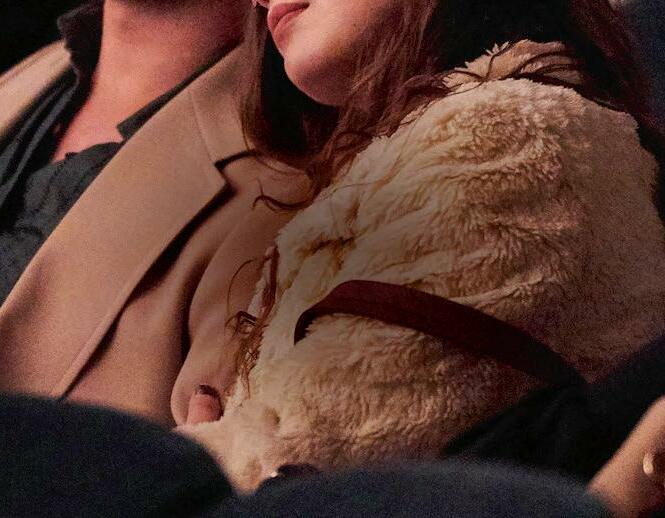

Dinner reservations can be made with Open Table or at clevelandorchestra.com. For questions about the Valentine’s dinner, email cx@clevelandorchestra.com.
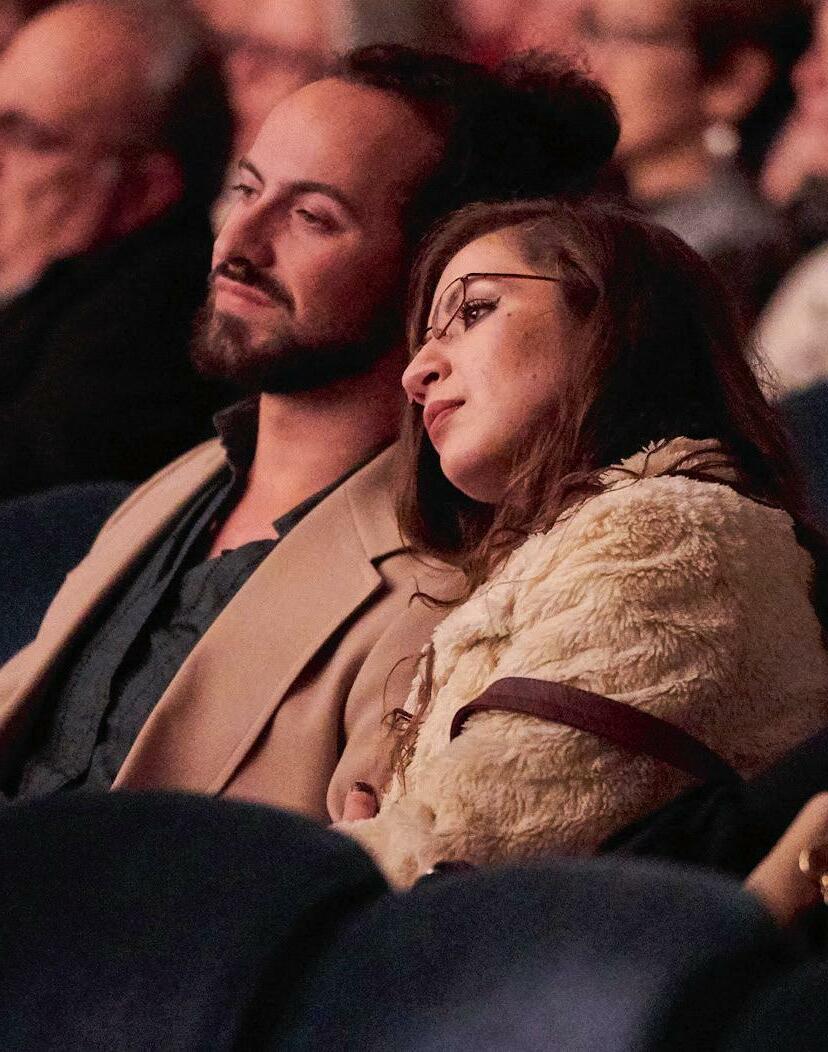
BEETHOVEN’S SEVENTH



FEB 17 | FRI 7:30 PM

Herbert Blomstedt conductor

Emanuel Ax piano

YOUR VISIT
HEALTH & SAFETY
The Cleveland Orchestra is committed to creating a comfortable, enjoyable, and safe environment for all guests at Severance Music Center. While mask and COVID-19 vaccination are recommended they are not required. Protocols are reviewed regularly with the assistance of our Cleveland Clinic partners; for up-to-date information, visit: clevelandorchestra. com/attend/health-safety
LATE SEATING
As a courtesy to the audience members and musicians in the hall, late-arriving patrons are asked to wait quietly until the first convenient break in the program. These seating breaks are at the discretion of the House Manager in consultation with the performing artists.
PAGERS, CELL PHONES & WRISTWATCH ALARMS
As a courtesy to others, please silence all devices prior to the start of the concert.
PHOTOGRAPHY, VIDEOGRAPHY & RECORDING
Audio recording, photography, and videography are prohibited during performances at Severance. Photographs can only be taken when the performance is not in progress.
HEARING AIDS & OTHER HEALTH-ASSISTIVE DEVICES
For the comfort of those around you, please reduce the volume on hearing aids and other devices that may produce a noise that would detract from the program. For Infrared Assistive-Listening Devices, please see the House Manager or Head Usher for more details.
FREE MOBILE APP TICKET WALLET
IN THE EVENT OF AN EMERGENCY
Contact an usher or a member of house staff if you require medical assistance. Emergency exits are clearly marked throughout the building. Ushers and house staff will provide instructions in the event of an emergency.
AGE RESTRICTIONS
Regardless of age, each person must have a ticket and be able to sit quietly in a seat throughout the performance. Classical season subscription concerts are not recommended for children under the age of 8. However, there are several age-appropriate series designed specifically for children and youth, including Music Explorers (for 3 to 6 years old) and Family Concerts (for ages 7 and older).
The Cleveland Orchestra is grateful to the following organizations for their ongoing generous support of The Cleveland Orchestra: the State of Ohio and Ohio Arts Council and to the residents of Cuyahoga County through Cuyahoga Arts and Culture.
For more information and direct links to download, visit clevelandorchestra.com/ticketwallet or scan the code with your smartphone camera to download the app for iPhone or Android.
Available for iOS and Android on Google Play and at the Apple App Store.
The Cleveland Orchestra is proud of its long-term partnership with Kent State University, made possible in part through generous funding from the State of Ohio. The Cleveland Orchestra is proud to have its home, Severance Music Center, located on the campus of Case Western Reserve University, with whom it has a long history of collaboration and partnership.
© 2023 The Cleveland Orchestra and the Musical Arts Association
Program books for Cleveland Orchestra concerts are produced by The Cleveland Orchestra and are distributed free to attending audience members.
EDITOR
Amanda Angel
Managing Editor of Content
aangel@clevelandorchestra.com
DESIGN Elizabeth Eddins, eddinsdesign.com
ADVERTISING Live Publishing Company, 216-721-1800
28 | 2022/2023 SEASON
today for instant,
and
Download
secure
paperless access to your concert tickets.
clevelandorchestra.com Cleveland Orchestra performances are broadcast as part of regular programming on ideastream/WCLV Classical 90.3 FM, Saturdays at 8 p.m. and Sundays at 4 p.m.
is everything.
Photographs in Ink
Featuring works made in printer’s ink rather than produced in the darkroom or digitally, this exhibition explores how artists including Alfred Stieglitz, Andy Warhol, Lorna Simpson and more, have influenced photographic images since the 1850s.
Through April 2 | Tickets at cma.org | CMA Members FREE

in part
the Ohio Arts
Ohio and the National
The Cleveland Museum of Art is funded in part by residents of Cuyahoga County through a public grant from Cuyahoga Arts & Culture. This exhibition was supported
by
Council, which receives support from the State of
Endowment for the Arts.
Liz, 1964. Andy Warhol (American, 1928–1987), Leo Castelli Gallery, New York. Color offset lithograph; sheet: 58.7 x 58.7 cm (23 1/8 x 23 1/8 in.); image: 55.8 x 55.8 cm (21 15/16 x 21 15/16 in.). The Cleveland Museum of Art, Gift of Harvey and Penelope D. Buchanan 1998.409 © 2023 The Andy Warhol Foundation for the Visual Arts, Inc. / Artists Rights Society (ARS), New York cma.org Image
A SYMPHONY OFSuccess

We believe that all Cleveland youth should have access to high-quality arts education. Through the generosity of our donors, we are investing to scale up neighborhood-
based programs that now serve 3,000 youth year-round in music, dance, theater, photography, literary arts and curatorial mastery. That’s a symphony of success. Find your passion, and partner with the Cleveland Foundation to make your greatest charitable impact.
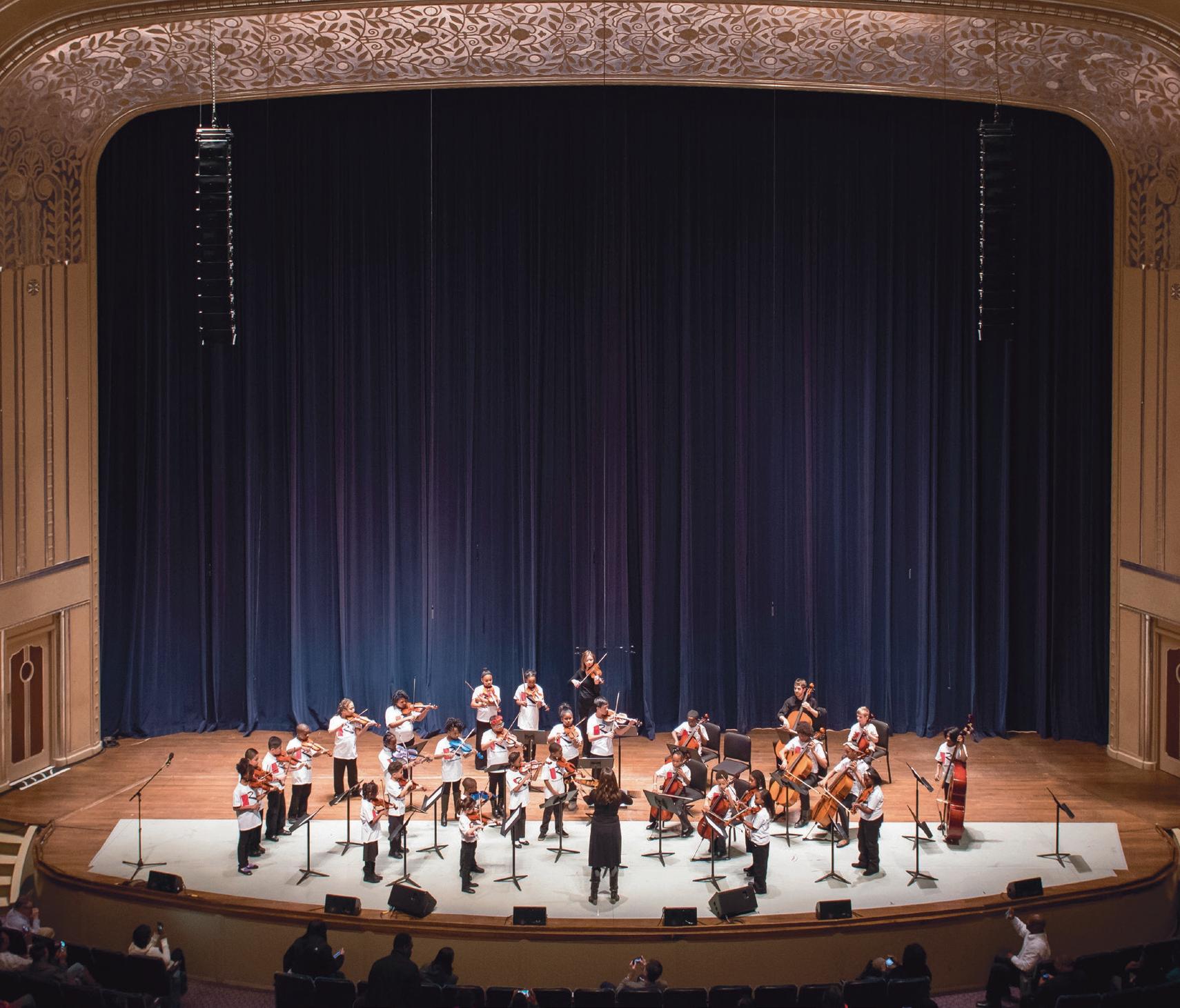
(877)554-5054
w ww.ClevelandFoundation.org
Rainey Institute El Sistema Orchestra




















































































